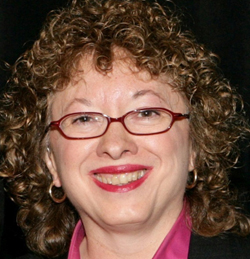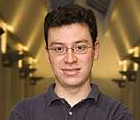When Matthew Stanton was a sophomore at Pittburgh’s Carnegie Mellon University, he often found himself walking around with a dead cell phone and no charger — or nowhere to plug in a charger.
That annoying experience came back to him later when, as a mechanical engineering major in his senior year, he was on a design class team working to create something that would help students.
Stanton and a teammate from that class, Hahna Alexander, are now the proud co-founders of SolePower, a company based on the resulting device: an insole weighing less than five ounces that uses the energy created by walking to charge a cell phone.
No longer will hikers have to worry about dead phones; the same for people living without a reliable source of power.
Having won awards for innovation, including one from South Africa, and having raised money thanks to Kickstarter and an initial investment from Innovation Works (Ben Franklin Technology Partners of Southwest PA), SolePower is now putting the finishing touches on its device. They will bring it to market late this year or in early 2015.
What inspired you to start SolePower?
My co-founder, Hahna, and I were both part of a senior mechanical engineering design class. Myself, Hahna and three other people came up with a power-generating shoe concept. At first we didn’t think there would be enough energy to charge a cell phone, so we were looking to create a shoe that would light up as you walk, like an adult Sketcher (light-up shoe), for students walking home in the dark who wanted to be seen by drivers.
Throughout the course, we found there was meaningful power there, and developed the concept of a device that would fit into a shoe.
Hahna took our clunky prototype to a Carnegie Mellon alumni event in Washington, D.C., and got a tremendous response from them. There were military and NGO groups that said we should definitely make a company out of it.
She came back, and we ran into each other walking across campus. She was excited about starting a company, so we got together with two of the remaining team members to make the company happen.
At the end of the school year, we graduated, and one of the other people went to Dartmouth for a Ph.D. program, the other got a full-time position in industry.
So that summer (2012), Hahna and I founded the company and got our first funding from Innovation Works. We had both decided to do our master’s degree in four and a half years, so we had one more semester. We were working full-time on SolePower and doing our graduate degrees.
Did you take advantage of any local resources to get the company off the ground?
We applied to several incubators, and got into AlphaLab (of Innovation Works). AlphaLab at that time was a software accelerator, and we are a hardware company, but we used it anyway. It was an amazing resource for funding, office space, mentoring and networking in the entrepreneurial community.
After graduating from AlphaLab, we did Kickstarter, where we raised $60,000 and had 450 pre-orders, which is phenomenal. The great thing was that people were ordering these devices a year and a half out from actual delivery.
There was a small investment from Carnegie Mellon, we won some business competitions, and we use TechShop — which offers all kinds of equipment for members to use themselves, like a gym for manufacturers.
When we left AlphaLab, we moved in with a larger company called Shoefitr. We shared office space with for about four or five months.
Then AlphaLab Gear (a hardware accelerator) opened and offered us free office space as an alumni-in-residence for a year, so we moved there.
You’ve won some competitions; what were they?
We won the McGinnis Venture Competition at Carnegie Mellon in 2013, and more recently, the Steve Case Rise of the Rest Competition for Pittsburgh.
We went to South Africa because one of the things you can do with a power-generating insole or sandal is bring power to people who don’t have access to reliable power sources. We won the Africa Energy Award‘s Innovator of the Year prize at the largest energy conference in South Africa (the Power and Electricity World Africa Conference in Johannesburg).
We also won an Invention of the Year award from Popular Science this year.
How has your company grown so far?
We found a new place not far from TechShop, and we moved in on August 18.
There are now seven full-time members of our team. That’s going to expand quickly after we launch.
We are working with manufacturers in the Northeast; we kept it local because it makes more sense to be able to drive two hours to reach your manufacturer than to fly across the world. The manufacturers have helped us through a lot of things we didn’t know, and helped redesign the product to make it more manufacturable. They’re the ones making it, and they know what the constraints are, which is really helpful to us.
We’re entering beta testing now. In the next few weeks and months we’ll be doing that, and then getting the product reading for market.
Will you sell directly to consumers or through retailers?
Initially sales will be directly through our website. We do have a lot of interest from retailers; they’re calling us. We recently got back from a trade show, where we were able to meet all the top retailers in the outdoor industry. They all said they want to sell it. Now it’s just a matter of getting the testing done, getting a quality product, and getting it into their hands.
What’s the big differentiator for SolePower?
There are other people doing similar technology embedded in shoes (using piezoelectric devices), but to have enough power you’d need $400 worth of piezos in your shoe. They’re not to the point where they’re viable.
No one else is doing this with an insole.
What’s next for your company?
We have a very interesting product in the works right now, which I can’t reveal yet. It will be an interesting ride going forward. The markets for the insole are tremendous in developing nations; there are military applications; there’s a boom in the consumer electronics market as wearables become more popular. They all need a way to be charged.
We have a host of other products and ideas that we can’t wait to get started on.
Writer: Susan L. Pena

http://solepowertech.com/
,
↑ Top


